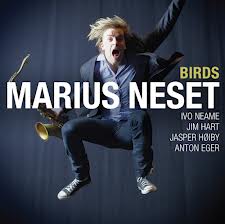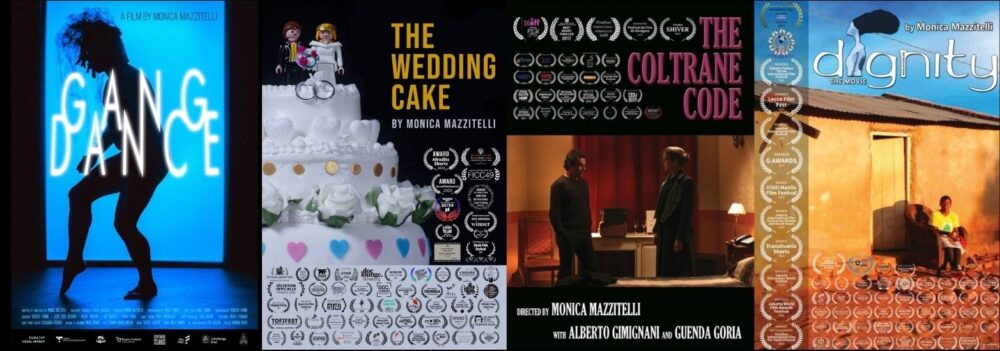 Probably, the only possible juxtaposition between the two Norwegian saxophonists Jan Garbarek and Marius Neset is the crimson color cover of their passport. This is said with full equal respect and appreciation for both of them. Garbarek’s icy notes are so distant from the earthy and almost Latin fire of this young dynamic composer and extraordinary saxophonist (tenor and soprano), who is delivering his third album, “Birds”, at the age of 28!
Probably, the only possible juxtaposition between the two Norwegian saxophonists Jan Garbarek and Marius Neset is the crimson color cover of their passport. This is said with full equal respect and appreciation for both of them. Garbarek’s icy notes are so distant from the earthy and almost Latin fire of this young dynamic composer and extraordinary saxophonist (tenor and soprano), who is delivering his third album, “Birds”, at the age of 28!
An enveloping work, with frequent changes of rhythm and inspiration, a composition at times incoherent and furious, that gives the impression of Neset being almost unable to tame his own awesome genius. It’s very difficult, if not impossible to get bored or distracted: this album calls for concentration, because of the variety of instruments he has added to his main Scandinavian-British band, Anton Eger (NO) on drums –and co-author of two tracks– Ivo Neame (UK) on piano, Jasper Høiby (DK) on double bass (all three in Phronesis, Høiby’s band: more to come on them soon), and finally Jim Hart (UK) on vibes.
Whatever he writes in the future and for however long his career will be, this album’s title track will always be his “Birdland”. “Birds” contains musical stimuli from every direction, a continuous change of tempo, inspiration, pitch, hue; and yet it is deeply coherent, like a symphony. Neset uses every instrument with creativity and generosity, and he makes his piece progress in an unpredictable way, creating a musical zoo.
The result is a Disneyan choral with explosive coloring, like an artistic firework display. The rhythm grows up to half of the track, where it pauses for a suffused jazz moment with almost only Neset’s mellow sax landing on percussions, only to land once again on the sensational symphonic restart at the eighth minute. After that, a false ending opens to a new descriptive break dominated by the flute played by Ingrid Neset (Marius’ sister), and this track is ready to fade into the following one (“Reprise”), continuing on a delicate Gershwin tone that grows into a dark and enchanted musical buzz. And all the themes of this colossal opening are unfolded – almost unzipped– in the following tracks, where many genres are touched, from bop to fusion, from folk to marching band, from cinematic to pastoral.
The third track, “Boxing”, sounds very amusing to my linguistic ear because Neset’s sax seems to imitate the intonation of the Norwegian language, almost like a conversation, with a central segment that sounds more like an improvisation, enriched by Jim Hart’s vibes. Hart is probably the only musician that makes me appreciate this instrument, as he is able to play the very best out of it, as even Joe Locke acknowledged.
“Portuguese Windmill” is one of the tracks where it is easiest to appreciate Neset as a saxophonist. It begins with a meek Coltranian flavour that evolves into an ample fusion sound, full of rhythmical changes until a new sweet final thrust, tasting almost like one of Stephane Grappelli’s tunes.
After “Spring Dance” –a track with a folkloristic flavor and the virtuosity of certain popular music–“Fields Of Club” switches again on a different tone, alternating bop to fusion with a groove that one would almost want to dance to, if it weren't for the mix of tempos which makes it impossible to do.
“The Place Of Welcome” is one of the cleanest and most lyrical songs on the album, with Høiby’s magnificent double bass and Hart’s vibes, it would have been the perfect conclusion for an album had there not been an even better one, as we shall see.
“The Sacred Universe” (preceded by its “Introduction”) takes a very broad filmic tone, with a taste of nouvelle vague, but even though “pleasant” and smooth, and again enriched by Høiby’s excellent double bass, Eger’s drums and Neame’s piano, it is perhaps the least interesting as far as the composition is concerned.
Perfect title for the tenth track, “Math Of Mars”, that has a stellar and nocturnal atmosphere with a melancholic and nostalgic feel, that drags the melody into a somehow martial crescendo. It sounds like the perfect final anticlimatic scene of a big-time science fiction movie: the scene where the super hero finally kisses the beautiful heroine. The final track, “Fanfare”, picks up the themes of “Birds” in a playful and circuslike way, like a big festive marching band, ending back into the completely irresistible wonder of the title track in the final two minutes.
Marius, first of all, congratulation, this is an incredible album! It has been mentioned as one of the best albums of 2013 by Ian Patterson at All About Jazz's, deservedly so. What do you think?
Thank you very much, I always feel very happy when other people like my music. That’s the main reason why we play, to touch people, and spread happiness and a lot of feelings.
Do you prefer to compose or to play the instruments, or is it the same for you?
There is a difference for me, but at the same time it’s very similar as well. The way in which you structure thoughts, the form, melodies, rhythms, harmonies, they follow the same principles in both the composition and improvisation.
Where do you get the most of your inspiration from? As a filmmaker, I must say that your music is really full of cinematic images to me. Is that something that interests you?
Thank you. Part of my music is very cinematic, sometimes my head is filled with images when I create, while on other occasions it is an environment that stimulates the composition, so I guess that's why most of my music is very cinematic.
If I were to write a list of musicians that may have inspired you, it would be a very long one; and yet, you are expressing yourself in a very original way, for all of the instruments you compose for. Do you feel gratitude to any musician in particular?
Yes, I have listened to a lot of musicians, but those who have been a major source of inspiration for me are Charlie Parker, Michael Brecker, Keith Jarrett, Django Bates, and Wayne Shorter.
“Birds”, Edition Records, 2013
- Birds
- Reprise
- Boxing
- Portuguese Windmill
- Spring Dance
- Field of Clubs
- The Place of Welcome
- Introduction to Sacred Universe
- Sacred Universe
- Math of Mars
- Fanfare.
Marius Neset: saxophones
Ivo Neame: piano
Jim Hart: vibes
Jasper Høiby: double bass
Anton Eger: drums
Ingrid Neset: flute, piccolo flute
Daniel Herskedal: tuba
Bjarke Mogensen: accordion
Tobias Wiklund: trumpet
Ronny Farsund: trumpet
Peter Jensen: trombone
Lasse Mauritzen: French horn.
